Interview with Sister Mai Nghiem
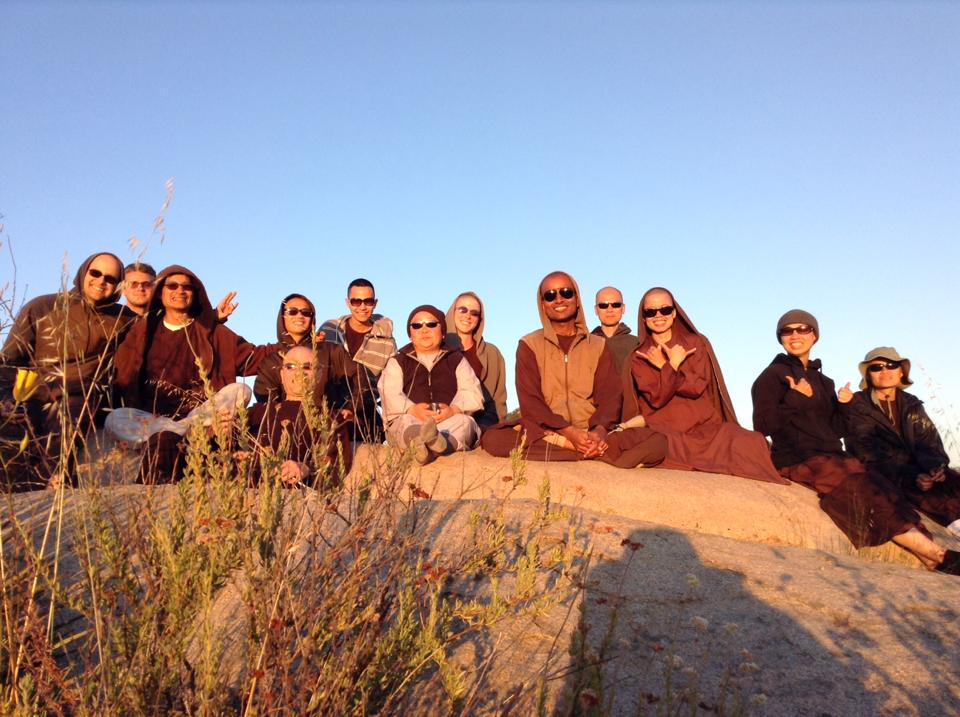
15th October 2018 at the Library in Lower Hamlet, Plum Village
Q: You are a relatively young sister in physical age but an older sister in Dharma age. How did you discover the practice in Plum Village and how did you decide as a teenager that you wanted to become a monastic?
Sister Mai Nghiem: I met the practice through my parents and my family. We went to the summer retreat every year since I was 10 in 1994. That was our summer vacation: the whole summer retreat. It seemed like Plum Village was part of my family in a way. We had very good friends. Back then, my parents and I felt connected to some of the brothers and sisters.
When I was 17, I came to live in Plum Village for a year. The plan was to stay for a year and to finish high school.
After some time, it felt strange to continue high school, after listening to Thay’s teachings and living more with the community. I felt I couldn’t see what I was going to do with my high school studies. However, with the study of the Dharma, it was clear what I was going to do. I didn’t go in the future and looked how it impacted my life and my family. In that moment, I dropped high school, was home schooled in New Hamlet, and became a nun.
Q: How do you manage to connect with your family while living in Plum Village?
I’m able to experience many different [monastic] centers and ways of doing things and environments.
MN: I think it’s something we’ve done as a family, and it’s a place we know as well. There is not much separation between Plum Village and the family. Of course, when I was away at times, we don’t see each other physically for a long time. We have strong family bonds. I don’t feel like I ever had to make an effort to stay connected to them, even though we may not talk for a long time.
Q: You’ve been ordained for how many years?
MN: I ordained in May 2002, so it’s been 16 years.
Q: As monastics, you live at different monastic centers. Where have you been? How has this helped you to live in in different centers and to be surrounded by different people?
MN: So where did I go? I moved a whole lot, whether it’s from New Hamlet to Lower Hamlet; then from Lower Hamlet, I went to Vermont, when we had Green Mountain Dharma Center before where we had Blue Cliff Monastery. And then I returned to New Hamlet and then back Lower Hamlet. Afterwards, I went to Paris, Hong Kong, Deer Park Monastery, and then back to Lower Hamlet again. What I appreciate about the moving is that I’m able to experience many different centers and ways of doing things and environments.
I don’t feel I belong to a particular place. We may say something like, “she’s the Lower Hamlet Sister, “she’s a New Hamlet Sister,” or whatever, but I don’t feel this way. I have roots in many different places, and I enjoy this very much. The richness is to see the different Sanghas operating differently and to be able to bring things you know to wherever I am. To share how things are done in other places too as a monastic Sangha or the lay Sangha, such as being in America and seeing how the lay Sangha operates in America. Many of them have been strong practitioners since the 80’s, so it’s very inspiring to see the multifold Sangha operating, learn, and then bring things back.
Healing the ancestral heart is like coming back to the original heartbeat.
Q: Thank you. What is your current focus in your personal practice and in your role as as a facilitator as well as someone who is there for the lay Sangha and for younger monastic sisters and brothers?
MN: This morning [on 15th October 2018], I wrote in my journal, “Healing the ancestral heart and awakening together.” It was our U.S. tour title in 2016, and it has stayed with me since. I don’t think the personal practice and the sharing can be different. You share your own practice. When I talk about the two, I don’t feel like it makes a differentiation.
Healing the ancestral heart is like coming back to the original heartbeat. It’s a heartbeat—a heart song we might have forgotten. We easily forget because sometimes we come to hear it, and we feel it. We sense it, and then we forget about it again.
It’s something that is your heartbeat and the heartbeat of other people. It’s the heartbeat of the trees, the Earth, and the animals. It’s like an ancestral heartbeat—like a drum—that has been there for thousands of years. I feel that in our society, for some time, we’ve lost contact with this heartbeat. We don’t hear it or recognize it when it’s sounding right there in our ears. Many times we try to destroy it, particularly with the Western World and the white race. I think we destroyed it in our own culture first as well as destroyed the capacity of being in touch with oneself, other people and the natural world around us. We need to see the Earth not as something separate from us but something that is part of us.
We created a lot of destruction, especially the indigenous ways of life, because we thought we had the good way. But we lost that heartbeat and we’re not able to hear it anymore. So this coming back to be in touch with this heartbeat within my own cells and also the history that goes with it, the history of losing it, the history of not hearing it anymore, the history of longing for it, and the history of the destruction of other cultures are all part of this. It’s all part of awakening together and for myself and again.
I’ve been a part of a group “White Awareness” to look at ancestral heritage. It is all around us nowadays. It’s not only in our Sangha but also in the world because the world is changing. We have to live with people we may be closer than ever or people who are different from us and, of course, the history we have with them. We have to look deeply if we don’t want to continue the history of racism, discrimination, and violence.
We need to see the Earth not as something separate from us but something that is part of us.
We talk a lot about ancestors here in Plum Village. If I look into my ancestry, I have to look at my ancestry as being more of a white ancestry. If race is not part of the healing process, then a big piece is missing, just like I am in the body of a woman. If gender is not part of my healing process on my path of liberation, then there is something missing too. How do I live my own gender, or how do I live my own whiteness? To be able to talk about ancestral heart and awakening to me, that is very much interbeing, no?
The Fourteen Mindfulness Trainings inspire me. I am looking more into them with young people. This is something we’ve been doing in Plum Village; it’s been nourishing, and I hear a lot of interest. I talked to a group of young people from Belgium during the Wake Up retreat [this past summer], and I am going to Belgium in January because they asked, “Can we have a weekend on the Fourteen Mindfulness Trainings just for ‘Wake Up’?”
I was like, “Yeah go for it!” I will be very happy to be there with them. I feel that the Fourteen Mindfulness Trainings are concrete way of looking into the many different areas of our lives and our society, as well as in our personal life, our families’ life, our cities, and our countries. In a Dharma talk from Thay we watched recently, he talked about the main practices of Buddhism: the Three Doors of Liberation and Three Dharma Seals; emptiness, selflessness, aimlessness impermanence, non-self and nirvana. He said, “Your job—your generation’s job—is to look into these teachings.”
For me, it’s the Fourteen Mindfulness Trainings because they are clearly explained. We look at the Fourteen Mindfulness Trainings or the Five Mindfulness Trainings as teachings and then practice them. You give rise and develop practices to be able to help discrimination, poverty, wars, broken families, racism, and any other ‘ism’ we can think of. When I hear this, it puts a big fire in my heart. It’s putting a very big fire, so this week, I’m looking into emptiness and what does it mean; I like to think of this as more full than empty.
When I go for a walk and breathe, I know the tree is also breathing. In that moment, the interbeing is clear.
It’s also to be able to recognize that the tree, food, and people are not separated from me. To think about this and ask, “How do I actually put this into practice in my life?” When I go for a walk and breathe, I know the tree is also breathing. In that moment, the interbeing is clear. It’s physical; it’s not to bring back the practice as a cellular level or intellectual level, but to feel it in the body and to let the cells remember because the cells remember very well. We let go of the head, the mind and the need to understand, think, process, etc. to let the body feel. To think less and to feel more.
Interview conducted by Annica and transcribed by Martina McNaboe


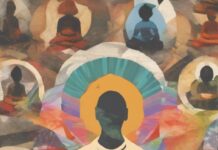
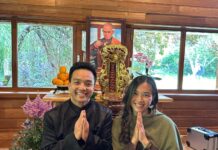
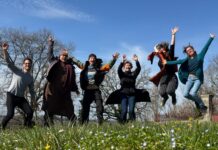
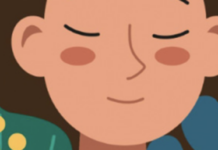
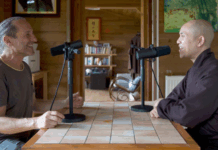
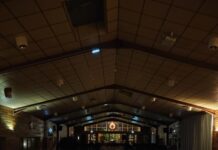
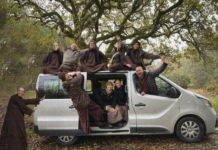
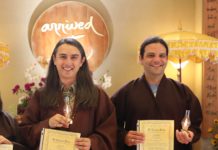
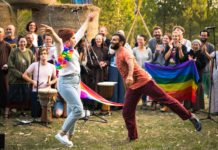
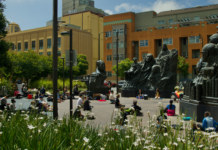

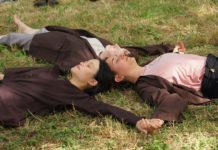
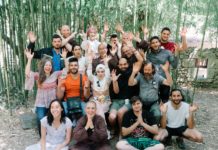
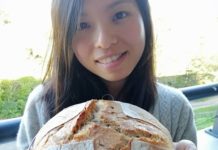
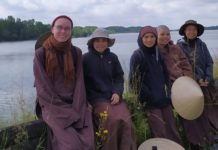
Beautiful. Thank you.